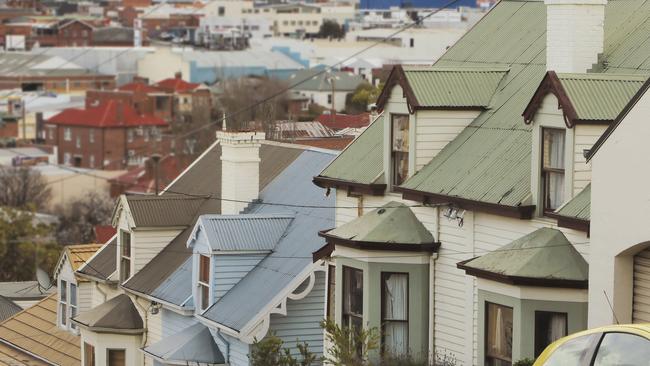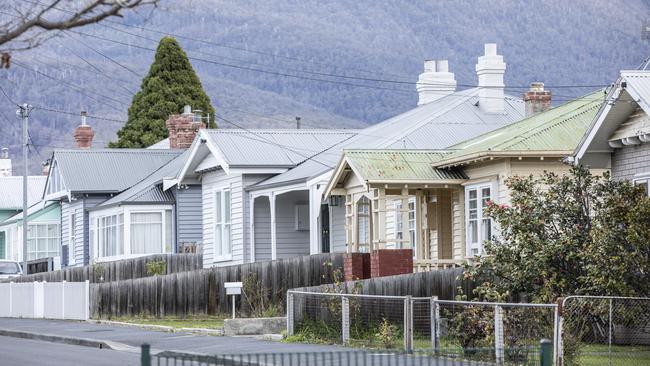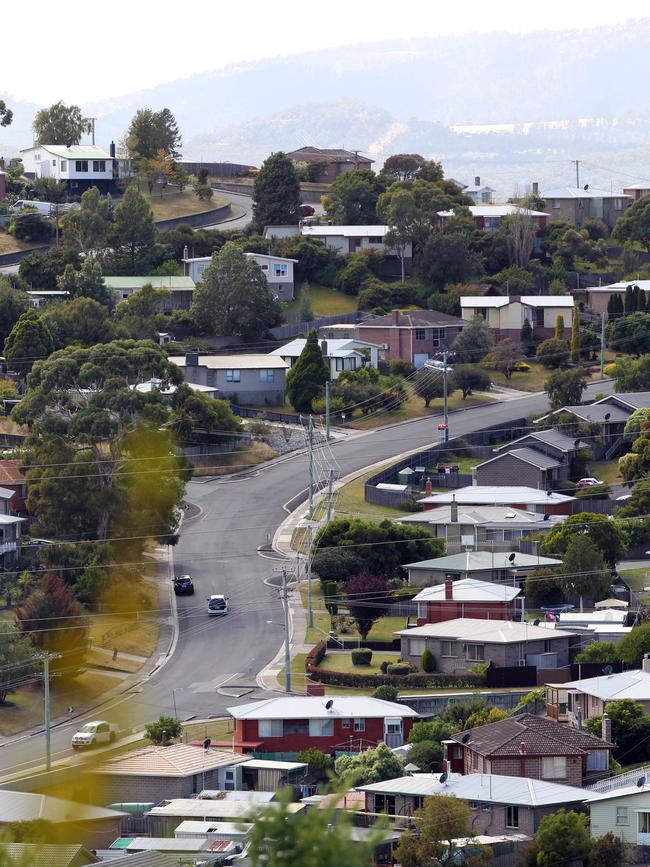Tasmania real estate Greg Barns: Calls grow for empty-homes levy to free up rentals
The right to stable accommodation is a fundamental one, and the number of people in this state couch-surfing, living in their cars or in tents is intolerably high, writes Greg Barns.

Opinion
Don't miss out on the headlines from Opinion. Followed categories will be added to My News.
IT is a matter of fact that Tasmania’s housing crisis is a human rights issue.
The right to stable accommodation is a fundamental one, and with a current vacancy rate of 0.7 per cent, according to SQM Research, the number of people in this state couch-surfing, living in their cars or in tents is intolerably high.
An empty-homes levy, proposed by a number of NGOs and the Greens last week, must be considered.
Why? Because it frees up rental properties. It is not a cure-all, but a much-needed addition to what seems an intractable problem in the absence of policy reform.
Both the Rockliff government and the Labor Opposition immediately ruled out the levy, but then neither shows any inclination to abolish one of the most iniquitous contributors to housing shortages, stamp duty. As an aside, NSW Premier Dominic Perrottet is doing so, and last week a Victorian parliamentary committee was established to inquire into the abolition of stamp duty and its replacement by the much fairer land tax.
But back to the vacant-homes levy. A paper prepared by groups including the Tenants Union, Anglicare, Justas and the Tasmanian Aboriginal Centre has urged the Rockliff government to urgently consider the levy. They set out a compelling case for such a levy.
“In March 2018, the Premier Will Hodgman convened a Housing Summit because ‘immediate action is needed to alleviate the housing concerns of Tasmanians doing it tough’,’’ the paper says.
“And yet over the following years housing supply and affordability has worsened. Over the past five years, median rents across Tasmania have increased by $150 per week (50 per cent). The wait list has increased from 2962 to 4598 applicants (55 per cent), and the average wait time has more than doubled from 48 to 101 weeks (110 per cent).”

And it estimates, using data from TasWater, that there are currently “563 empty homes across the Hobart, Glenorchy and Launceston municipalities and may be up to 2000 empty homes across Tasmania”.
TasWater has clarified that the data was “actual residential premises”, not vacant lots or construction sites.
A vacant-homes levy means that if a residential property is vacant for, in some cases six months and in others 12 months, an amount equalling one to five per cent of the assessed value of the property is payable. So on a $500,000 property with a 1 per cent levy it is $5000 a year.
A vacant-homes levy is not a novelty. Take Vancouver, Canada. That city has made international news because it, too, has had an appalling housing crisis for some years. Set at 3 per cent, shortly to be 5 per cent of the assessed value of the property, this levy over the period 2017-21 has led to a reduction of 36 per cent in vacant houses. Toronto, Canada’s biggest city, is about to introduce a similar levy; similarly in the city of Hamilton in Ontario.
In Melbourne the levy has been part of the landscape since 2018 and applies to 16 areas, mainly in the inner and middle urban areas.
In Scotland, an empty-homes levy in 2021-22 led to 1152 empty properties being inhabited again. In 2020 this number was 851 homes and 1412 in 2019, according to the Scottish Empty Homes Partnership.
In other words, if such a levy was applied in Tasmania, there would be a demonstrable reduction in vacancy rates.

For those who think a vacant-homes levy is an exercise in socialism think again. From the perspective of those who think market-driven solutions are generally optimal, when there is market failure then ideas such as levies are important in shifting behaviour. As the economics and business writer Michael Pascoe has said: “Leaving the supply of housing stock in the hands of developers whose priority is increasing prices and profits, not the provision of shelter, has resulted in the present shortage, a situation exacerbated by some Covid trends even while Covid-19 slashed immigration.”
For a government and the alternative, here the ALP, to dismiss out of hand a vacant-homes levy shows an indifference to human rights. As noted above, housing is one of the fundamental rights recognised by the United Nations. As the Australian Human Rights Commission says: “The right to housing is more than simply a right to shelter. It is a right to have somewhere to live that is adequate.”
What does it say about political parties in Tasmania that they will not consider a policy proposal that has runs on the board in terms of effectiveness, and which deals with the most pressing social issue of our time? Is it because of the absurd cowardice both the Liberals and ALP have towards serious taxation reform? Or are they in the pockets of developers and the bourgeoisie who play the distorted tax system to speculate on property?
Only the Greens sound and act rationally, and with humanity, on this issue.
Hobart barrister Greg Barns is a human rights lawyer who has advised state and federal Liberal governments.



